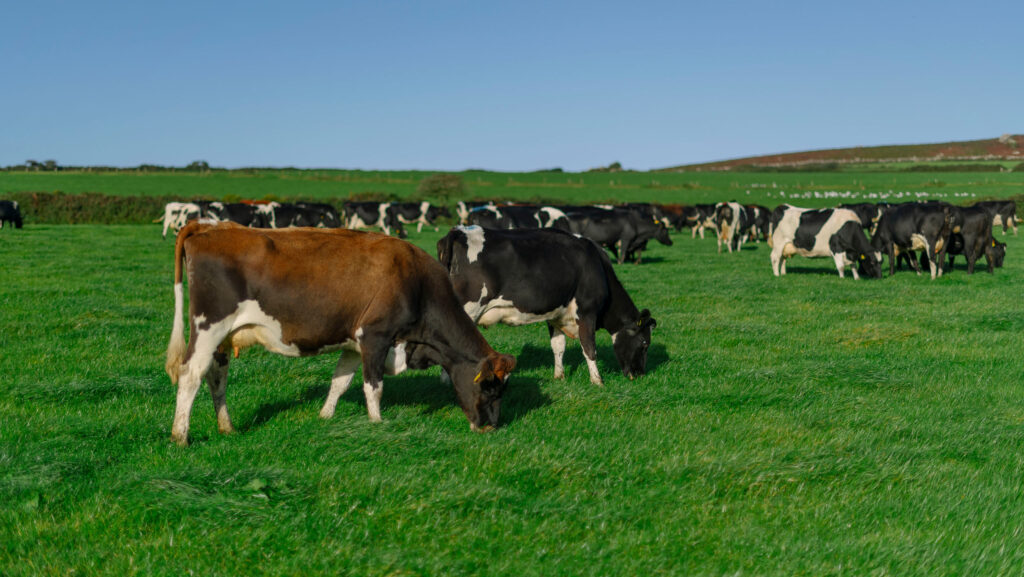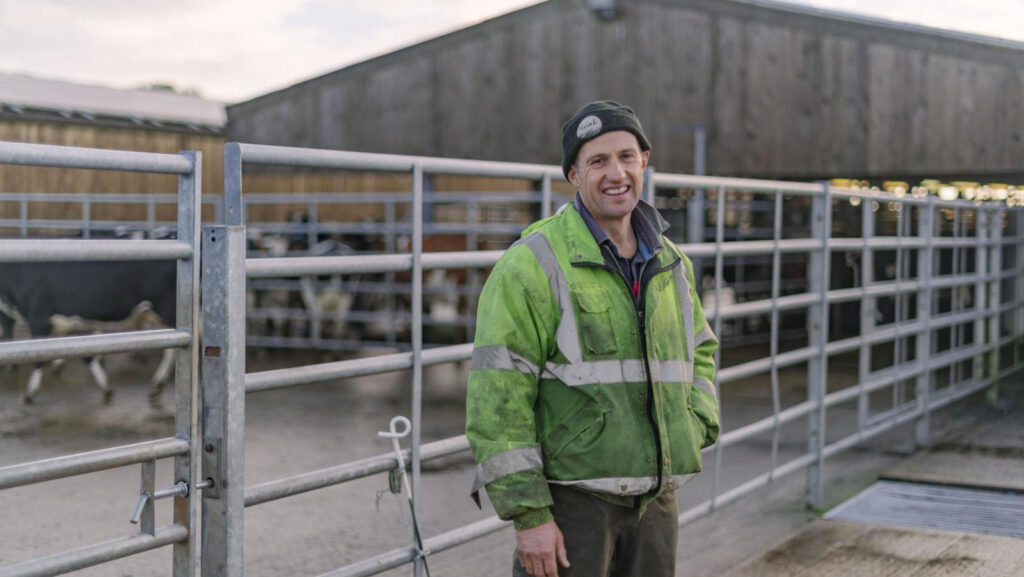How lush spring growth is affecting summer grazing decisions
 © Jim Wileman
© Jim Wileman Cornish dairy farmer and experienced grazing manager Chris Knowles is sharing updates about his 2024 grazing season with Farmers Weekly.
In this second article, Chris reveals how he coped with excess grass at the start of the season.
See also: How to manage surplus grass at spring turnout
Farm facts: Trink Farm, Cornwall
- 223ha of which 110ha grazing platform
- 300 crossbred cows
- Spring block-calving starting 20 February
- 60 cows calving in autumn
- Averaging 5,200 litres at 4.8% fat and 3.8% protein
- Operating 10 milkings in 7 days for the past two years
- Granite soils and sloping topography
- 11-12t dry matter/ha grown each year
- Annual rainfall 1,295mm
- Height above sea level 137-198m
What happened after your early turnout and higher-than-usual grass covers?
We didn’t get out of winter until 12 April when we dried up weather-wise.
We ended up not being able to graze 20 acres (8ha) and cut it for silage at the end of April. There are another 25 acres (10ha) to take now.
We only take surplus grass off the platform as silage, making about 200 bales a year.
It is usually high quality and will either be fed in winter to cows in-milk or yearlings – unless we have a drought this summer and have to feed it.
Some paddocks were over-long and we didn’t graze them as well as we would have liked, but it was better than we thought we would be.
Since mid-April, things have been more normal. We have had moisture, temperature and good grazing conditions, and growth rates of 50-80 kg/ha of dry matter (DM).
We can get up to 90kg DM/ha but are quite coastal so not quite up to 100kg.

Chris Knowles © Jim Wileman
Are you predicting a dry period ahead?
May for me is always the crunch month: if it is too dry then, we are on the back foot going into summer.
We have had sensible moisture; things are as well-conditioned as they can be and I’m not too worried at this stage.
It is always a difficult month to manage grass because it just wants to head.
How do you manage seedheads?
There are two options: keep on a fairly short round of about 20 days and try to eat the seedheads before they appear, or mow.
My choice is to pre-mow and cows eat the grass; if growth is quick, we can silage it. It’s also possible to top after grazing.
What nutrients have you applied to the platform?
There have been two applications of Optigraze. This is a 21% nitrogen (N) product, with sodium, sulphur, magnesium and trace elements, plus humic substances, which enhance soil bacteria.
We have used this for seven years and I think our soils are more balanced and active with worms. Grass growth is slower but healthier.
We usually apply it three times a year, which gives us 120kg N/ha. In March and April, we followed the cows with watery slurry using the trailing shoe, applying 2,500 gallons/acre [23 cu m/ha or 27,788 litres/ha].
Tell us what has gone well so far
Cows are eating well, settled and content. They are coming bulling well – we are into our second week of artificial insemination. It’s been more enjoyable since normality resumed in mid-April.
Cows are eating an average 16kg DM/day of grass plus 2kg of cake and are giving 19.5 litres at 4.6% fat and 3.6% protein.
Describe your plans for summer
June will be more difficult as grass can get stemmy, and we have just started our fourth round so will use more strategic pre-mowing.
We have 60 cows calving in October to supply winter milk for our bottling enterprise.
This will give some flexibility if it turns dry: we can dry cows off and take pressure off the grazing platform.
I also want to keep replenishing our forage stocks if we get a good summer.
Have you tried anything new this season
We have been measuring grass fortnightly for the first time on heifer grazing. We are upping the game and making more of the grass that is there.
This ground is higher up and later to grow, so it didn’t take off until the last two weeks of May.
Measuring means we are making better decisions about skipping paddocks. We are also back-fencing to protect regrowth.
Heifers are eating shorter, leafier grass on shorter rotations. They are eating it down, it is better quality and not stemmy.
We are probably getting higher utilisation as a result and a bit more silage made from surpluses.
Any advice to other grazing managers?
Don’t be afraid to use a mower. We think we shouldn’t do it, but even the most experienced graziers have to.
But it is strategic use to help reset the residual, get quality and not waste grass. Pre-mowing is my preferred option.
Also, try to look 10-14 days ahead of the grazing wedge.
You get a feel of where you are going. It might all be good at the moment, but if moisture stops and soil dries up, you need to be ready to lengthen the rotation as soon as you can.
And think about grazing grass, not silaging it.
